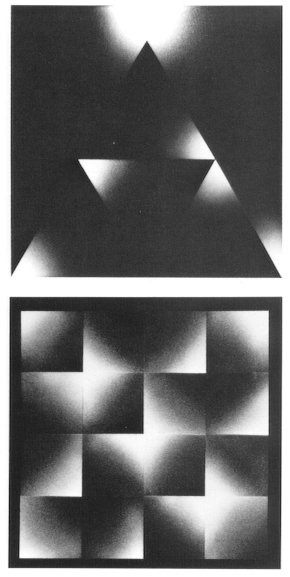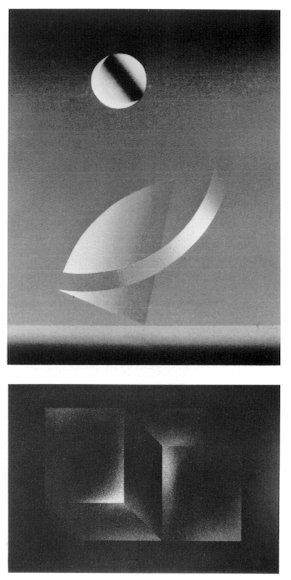|
2 -- Expression of three-dimensional
effect
(1) Effect of gradation (shading) A three-dimensional shape has a variation in brightness by the way the light hits it even if the surface is painted uniformly using the same color. When light is shone on it, the brightness of each surface composing a solid is different when the solid has curved surfaces or concavities or even when it does not have any of them. Furthermore, the brightness is not uniform on each plane. It is easily understood if we prepare a solid model, and take a picture of it. In other words, each surface has a variation in the brightness respectively, and there exists the shape of a solid as an assembly of those surfaces. In order to describe an attractive solid, the elements of "shadow" and "variation of brightness" are important, as well as good shape. When a plane or curved surface with a simple geometrical
configuration is naturally placed and observed, it is understood that the
brightness on the surface changes regularly and gradually. Therefore, we
feel a three-dimensional effect on these artificial plane diagrams if a
gradation of brightness is changing gradually from a bright area to a dark
area. Illusions of a complex solid which do not exist in real three-dimensional
space can be composed when the surfaces are drawn freely using this shading
skill described above.
|

